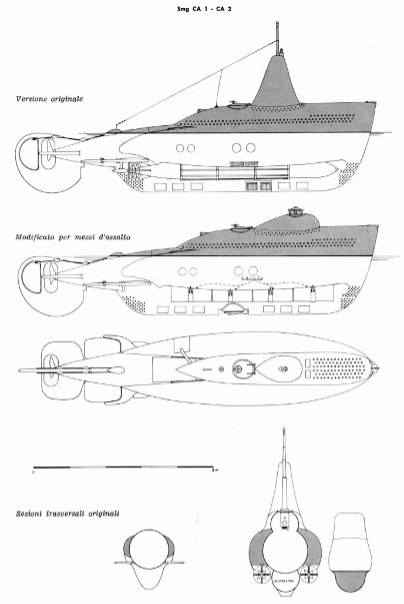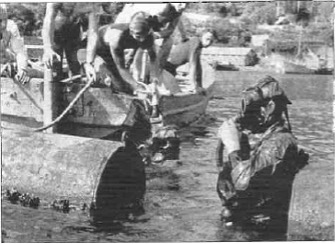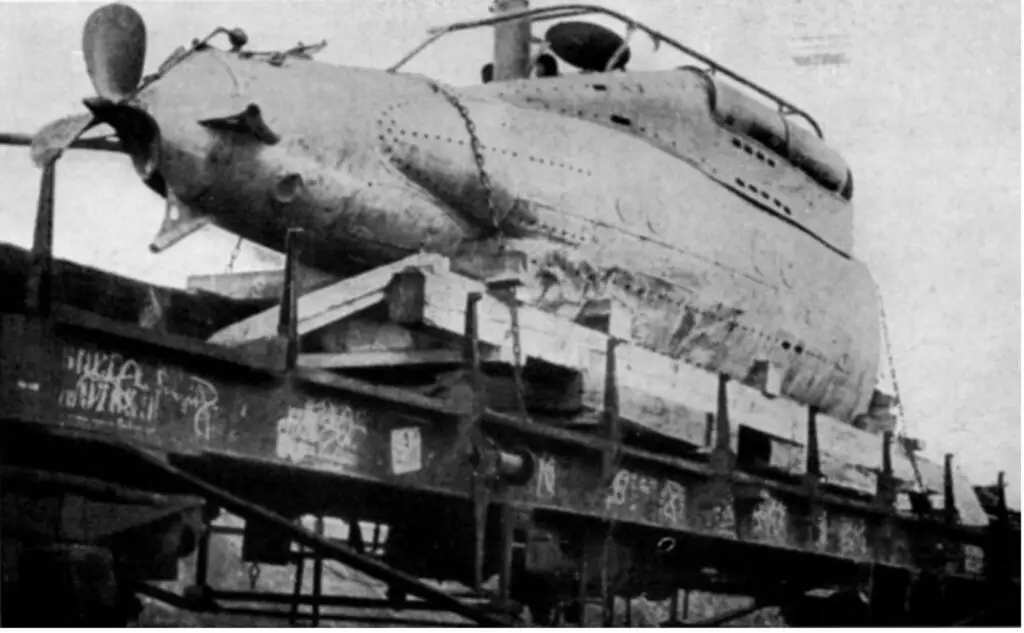Project and Prototypes
In the 1930s, the aircraft manufacturer company “Caproni” ventured outside its usual field of work and developed the prototype for the first Italian midget submarine, the C.A. class. This new class had to be employed in harbour defense or to ambush enemy warships in specific choke points. The C.A. displaced 13 tons, 10 meters long and had a crew of two men who could rely on two 450mm torpedoes as an offensive weapon. Powered by a 60 HP diesel engine and by a 25 HP electric engine, the C.A. had a speed of 5-6 knots and autonomy of 70 nautical miles and could dive to 55 meters.
In April 1938 the first two C.A. were delivered to the Regia Marina and started a series of testing in the Venice lagoon. The navy experts considered the C.A. to be too fragile and lacking sufficient manoeuvrability to conduct offensive actions against moving targets. Based on the testing experience, several modifications were conceived and led to the development of a new class of midget submarines, the C.B. class, slightly bigger and capable of addressing the problems present in the C.A. With the C.B. ordered into production, the two surviving C.A. were disarmed and locked in military depo.
New purpose
With the start of the war and the first missions of the X°M.A.S. flotilla, the idea of using a small underwater vessel to support the actions of the “Gamma Men” (Frogmen with explosive charges) came to the mind of some brilliant men. Commander Angelo Belloni (inventor of the Italian personal breathing devices) and Eugenio Wolk (commander of the Gamma men section of the X° M.A.S.) began to work on the concept. The idea was to use a small midget submarine to infiltrate the enemy harbour and release in safety a small group of Gamma men, that would have attacked enemy ships with the explosive charges carried on the submarine. This tactic would have prevented fatigue and other threats faced by the frogmen, besides increasing the number of explosives carried (thanks to the use of the submarine). As for the human torpedo, a larger submarine was needed to get the midget submarine close to the enemy harbour.
The X° M.A.S. initially requested to use a couple of the C.B. midget submarines to start the experiments but the request was denied. In compensation, in September 1941, the X° M.A.S. received the two older C.A. (named C.A. 1 & C.A. 2). The two little vessels needed repairs and modifications but the men of the X°M.A.S. did not lose time and between November 1941 and February 1942 they successfully tested the C.A. in their new role of Gamma men carrier, truly becoming a kind of assault submarine. The periscope and the small conning tower were removed, as well as the diesel engine and the torpedoes, leaving space for the explosive charges and the gamma men. Tests and trials continued for the whole summer of 1942, and from the experience gained came the order of two new improved C.A. to the Caproni factory (the C.A. 3 and C.A. 4).

The original version of the C.A. (first profile) and the modified version (second profile) serving as a gamma men carrier
Given the still-experimental nature of the C.A. carrying Gamma, the X°M.A.S. decided to use it against an Allied port located in the Atlantic. These ports were considered less defended and guarded than those of the Mediterranean, which had already experienced attacks from the X° M.A.S. and had significantly improved their defenses.

Gamma men of the X° M.A.S.
In July 1942, the C.A. 2 was shipped by train to the BETASOM base in Bordeaux and there, the submarine Leonardo Da Vinci underwent a series of modifications to act as a C.A. carrier. The forward deck gun was removed and replaced with a small pit able to store the C.A.
In September 1942, the Leonardo da Vinci executed a series of trials at sea where it tested the transport, the release, and the retrieving of the C.A. The tests were considered successful and the idea to launch an attack against an allied harbour in the Atlantic got momentum. The X°M.A.S. decided to wait for the completion of the two new C.A. (3 & 4) and to gather more intelligence on the enemy ports and their defenses.

The submarine Leonardo Da Vinci modified for carrying the C.A.
The plan to attack New York
Between the end of 1942 and early 1943, the X° M.A.S. identified two possible targets, one being the African port of Freetown, while the second being nothing less than New York. The action was scheduled for December 1943, the Leonardo da Vinci had to cross the Atlantic and reach the New York harbour, near the Hudson River estuary. Here, it would have released the C.A. carrying around 12 gamma men, tasked with mining the merchant ships at anchor in the Hudson. In those circumstances, the retrieving of the C.A. was considered extremely difficult, thus the hypothesis of scuttling the C.A. after planting the charges to the enemy ships was seriously considered.

The C.A. 2 seen from the conning tower of the Leonardo da Vinci
It goes without saying that the attack, if successful, would have mainly gained a psychological and propaganda victory for the Axis, certainly not a material one. The loss of the Leonardo da Vinci in May 1943 caused further delays to the action and the armistice of September 1943 put a definitive end to the daring plan of attacking New York.

The C.A. 2 loaded on a train carriage in Bordeaux
Sources
Bagnasco, E. (2015). I mezzi d’assalto Italiani 1940-1945 (Parte II).